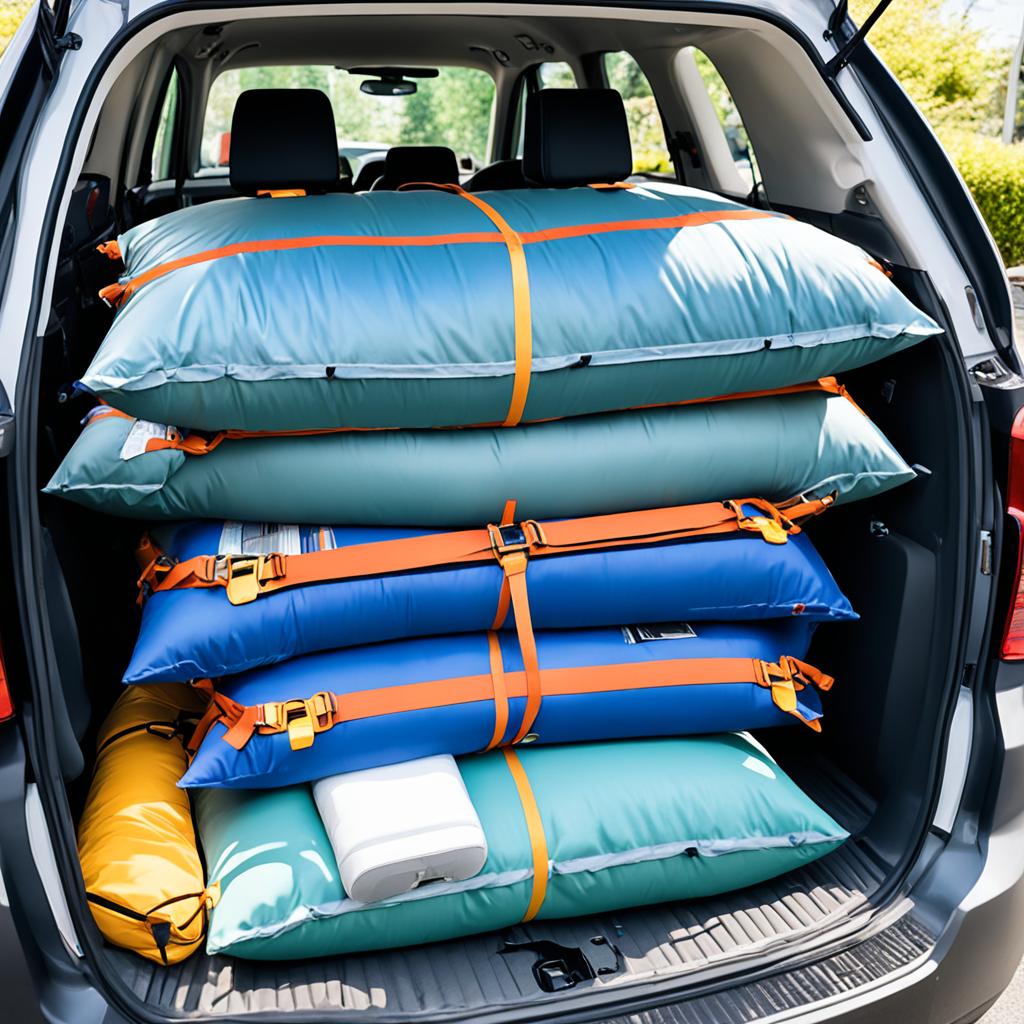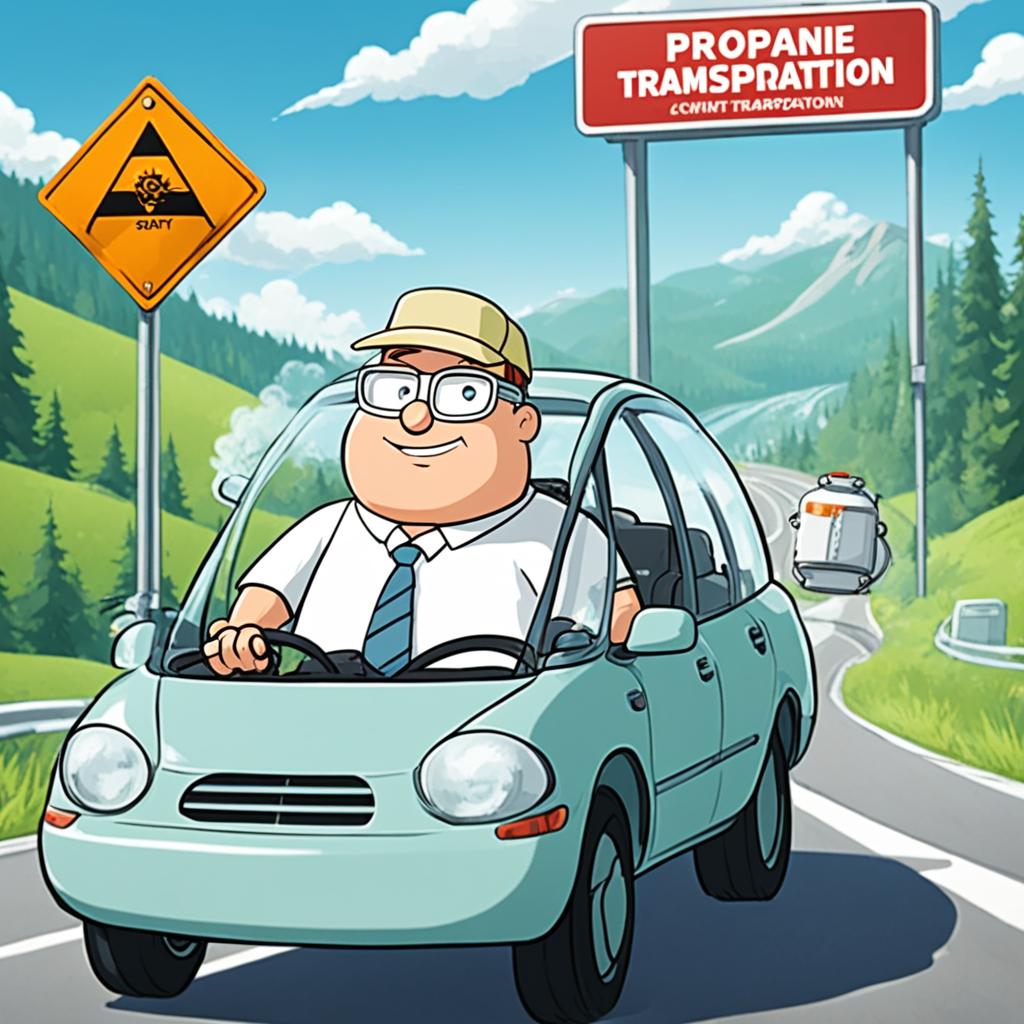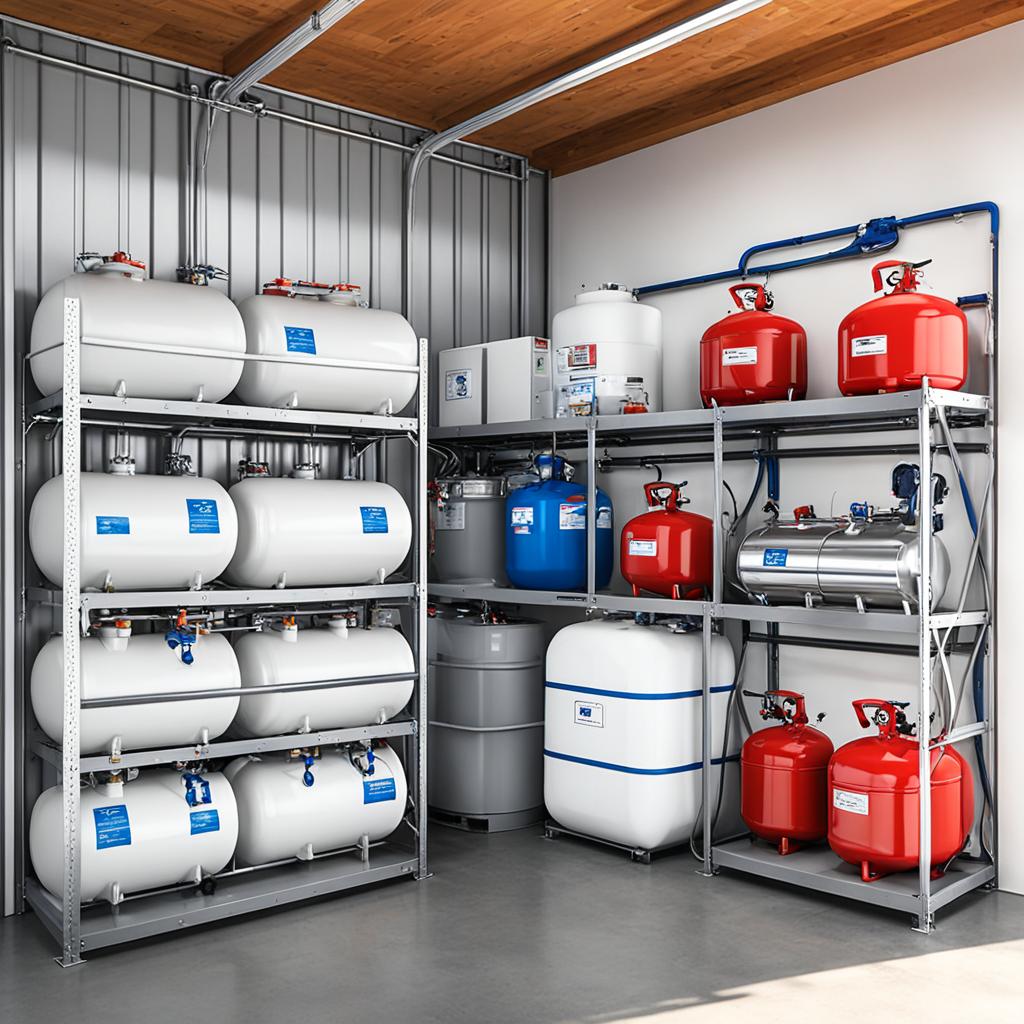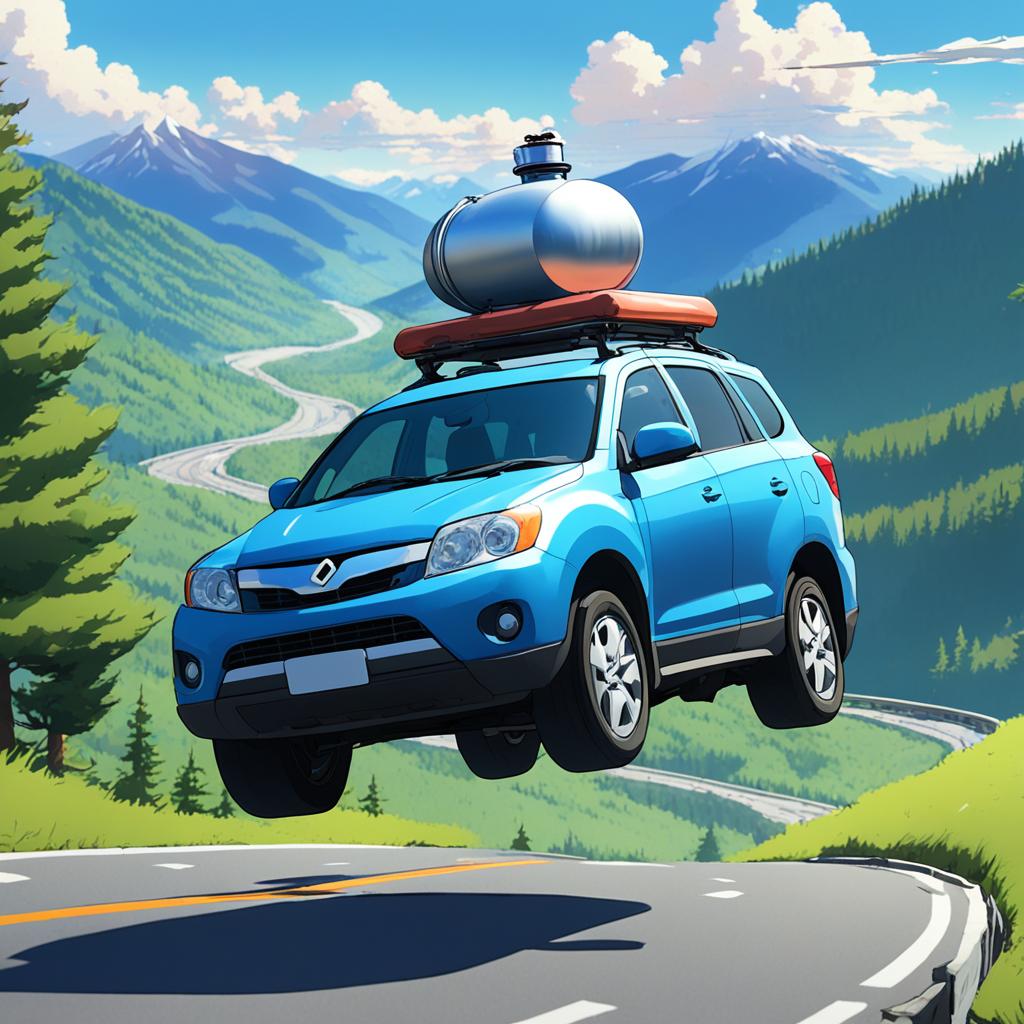Imagine hitting the road for an adventurous camping trip with your trusty propane tank in tow. But wait, is it safe to travel with a propane tank in your car? Should you be concerned about the potential risks and hazards?
In this article, we will dive deep into the topic of traveling with a propane tank and explore the necessary precautions to ensure your safety. From securing the tank properly to storing it correctly, we’ll provide you with all the information you need to know for a worry-free journey.
So let’s debunk common myths and uncover the truth about traveling with a propane tank. Get ready to find out everything you need to know about the safe transportation of a propane tank in your car!
Best Ways to Transport your Propane Tank

When it comes to transporting your propane tank in a car, it’s crucial to ensure its secure placement to prevent accidents and ensure your safety on the road. Here are some of the best ways to transport your propane tank:
- Using a Pickup Truck or Trailer:
If you have a pickup truck or a trailer, you have the advantage of a sturdy and spacious cargo area. To secure the tank, use bungee cords or ropes to fasten it tightly to the truck bed or trailer. This prevents the tank from sliding or bouncing around during transportation. Make sure the tank is in an upright position to avoid leaks or damage.
- Wedge Between Front and Back Seats:
If you’re using a car, you can position the tank securely by wedging it tightly between the front and back seats. This placement ensures the tank remains upright and firmly fixed in place. To provide additional support, use seat belts to secure the tank, preventing any movement during the journey.
- Transporting in the Trunk:
Another option for transporting your propane tank is placing it in the trunk of your vehicle. To keep the tank upright and prevent rolling or shifting, use a pre-made stand or a high-sided item like a milk crate. This provides stability and ensures the tank remains in position throughout the drive.
Remember, regardless of the method you choose, it’s important to prioritize safety by checking for any signs of leaks or damage before transporting the tank. Always keep the tank valve tightly closed to avoid accidents or propane leaks. By following these best practices, you can safely transport your propane tank to your desired destination.
Propane Tank Transportation-Safety Tips

When it comes to transporting a propane tank, your safety should be the top priority. Follow these propane tank safety tips to ensure a secure and worry-free journey:
- Never keep a filled propane cylinder inside a hot vehicle as high temperatures can cause the pressure inside the tank to increase, potentially leading to leaks or explosions.
- Always transport the tank in a secure, upright position to prevent the risk of it falling, shifting, or rolling during transit.
- Place the tank in a well-ventilated area of the vehicle to prevent the buildup of fumes or gas in confined spaces.
- Close the cylinder valve tightly and seal it with a plug if required, even if the tank is empty. This extra precaution ensures that no gas or fumes can escape.
- Proceed directly to your destination without making unnecessary stops or detours to minimize the time spent transporting the tank.
- Once you arrive at your destination, promptly remove the tank from your vehicle. Propane tanks should not be stored inside vehicles for prolonged periods.
By following these safety precautions for propane tank transportation, you can confidently transport propane tanks without compromising your safety or the safety of others.
Propane Tank Transportation Safety Checklist:
| Checklist Item | Explanation |
|---|---|
| Secure Upright Position | Transport the tank in an upright position to prevent dangers associated with tipping or rolling. |
| Well-Ventilated Area | Place the tank in a well-ventilated area to avoid the buildup of flammable fumes or gases. |
| Closed Cylinder Valve | Tightly close the cylinder valve and seal it with a plug, even if the tank is empty. |
| Direct Transport | Transport the tank directly to your destination, minimizing the time spent in transit. |
| Prompt Removal | Upon arrival, remove the tank from your vehicle promptly and store it in a safe location. |
Storing Propane Tanks

Proper storage of propane tanks is crucial for ensuring safety and preventing potential hazards. Whether you need to store your propane tank indoors or outdoors, following the correct guidelines is essential to maintain the integrity of the tank and minimize any risks.
When it comes to indoor storage, propane tanks should never be stored inside a home, shed, or garage. These enclosed spaces lack proper ventilation and can create a potentially hazardous environment. Instead, choose an outdoor storage location that meets safety requirements.
For outdoor storage, select a well-ventilated area away from direct sunlight. Exposure to direct sunlight can increase the temperature inside the tank, leading to pressure buildup and potential leaks. Ensure the tank is securely placed on a stable surface to prevent tipping or falling.
Additionally, it is important to properly shut off the tank and regularly check the valves and connector hoses for any signs of leaks. Leaks can be detected by using a solution of soapy water and observing for bubbles. If a leak is detected, immediately turn off the tank and consult a professional for repairs.
To enhance stability and prevent accidental movement, consider using a tank foot or a propane tank holder and stabilizer. These accessories provide an extra layer of support and security, minimizing the risk of potential accidents or damage.
Remember, proper storage and maintenance of propane tanks are essential for ensuring safety. By following these guidelines, you can confidently store your propane tank, both indoors and outdoors, while minimizing any potential risks.
| Propane Tank Storage Tips | Indoor | Outdoor |
|---|---|---|
| Location | Never store indoors | Well-ventilated area away from direct sunlight |
| Stability | Securely place on a stable surface | Use tank foot or propane tank holder and stabilizer |
| Valves and Hoses | Regularly check for leaks | Regularly check for leaks |
Connecting your Grill Tank
Before you start grilling with a propane tank, it is crucial to ensure a proper and safe connection. Follow these steps to connect your grill tank correctly:
- Read the Manufacturer’s Instructions: Begin by carefully reading and understanding the manufacturer’s instructions for connecting the tank to your grill. This will provide you with specific guidelines that may apply to your particular model.
- Check for Leaks: Before connecting the tank, inspect the gas line and fittings for any signs of damage or wear. Make sure there are no leaks by conducting a soapy water test: Apply a mixture of soap and water to the connections, then open the tank valve. If you see bubbles forming, there’s a leak, and you should not proceed with the connection.
- Secure the Tank: Place the grill tank in its designated compartment or secure it in a stable and upright position. Avoid placing it in enclosed spaces like your home, garage, or shed.
- Connect the Hose: Attach the regulator hose securely to the tank’s valve, ensuring a tight connection. Use an adjustable wrench to tighten the fitting, but be cautious not to overtighten and risk damaging the connection.
- Test for Leaks Again: After connecting the hose, perform another soapy water test to check for leaks. If any bubbles appear, turn off the gas valve immediately, disconnect the hose, and address the issue before proceeding.
- Turn on the Tank: Open the propane tank valve slowly and fully. Make sure the valve is turned counterclockwise until it is fully open.
- Ignite the Grill: Follow the grill’s lighting instructions to ignite the burners. Always light the grill with the lid open and keep a safe distance from the heat source.
- Regularly Inspect and Maintain: It is essential to regularly inspect and maintain your grill and propane tank. Check for leaks, clean the grill, and ensure all components are in good working condition to ensure optimal safety and performance.
Remember, always turn off the tank’s valve when the grill is not in use. For outdoor storage, keep the tank connected but turned off. However, for indoor storage, turn off and remove the propane tank. Never store a propane tank inside your home, garage, or shed.
Do’s and Don’ts for Transporting Small Propane Tanks
When it comes to transporting small propane tanks, safety should be your top priority. By following a few simple guidelines, you can ensure that the transport process is smooth and hazard-free. Here are some do’s and don’ts to keep in mind:
Do:
- Secure the tanks: When transporting small propane tanks, always secure them in an upright position to prevent rolling, falling, or shifting during transit. This will minimize the risk of accidents and leaks.
- Ensure proper ventilation: Place the tank in a well-ventilated area of your vehicle to allow for the dispersion of any potentially harmful gases. If possible, crack a window to improve airflow.
- Close the valve tightly: Before hitting the road, make sure the tank’s valve is tightly closed to prevent any gas leakage. This will help maintain the safety of both you and your vehicle.
- Transport directly to your destination: It is advisable to take the shortest route possible and avoid unnecessary detours when transporting small propane tanks. This minimizes the time spent with the tank in your vehicle and reduces the risk of accidents.
- Remove the tank upon arrival: As soon as you reach your destination, promptly remove the small propane tank from your vehicle. This ensures that you avoid potential safety hazards associated with leaving the tank inside.
Don’t:
- Store tanks in a closed vehicle: Never store small propane tanks inside a closed vehicle, regardless of whether it is occupied or unoccupied. Doing so can lead to the accumulation of hazardous gases, putting you and others at risk.
- Keep tanks in living areas: Avoid storing small propane tanks in any living area attached to your home, such as a garage or shed. These areas are not suitably ventilated and can pose a significant safety hazard.
By adhering to these do’s and don’ts, you can transport small propane tanks safely and prevent any potential accidents or incidents. Remember, it is crucial to prioritize safety when handling and transporting propane tanks.
| Do’s | Don’ts |
|---|---|
| Secure the tanks in an upright position | Store tanks in a closed vehicle |
| Ensure proper ventilation | Keep tanks in living areas |
| Close the valve tightly | |
| Transport directly to your destination | |
| Remove the tank upon arrival |
Choose Levco and Have Your Tank Delivered
If you’re looking for a safe and convenient way to transport your propane tank, consider the propane tank delivery service offered by Levco. They specialize in delivering propane tanks directly to your home, ensuring a hassle-free experience and eliminating the need for you to transport the tanks yourself.
With Levco’s propane tank delivery service, you can have peace of mind knowing that your tanks are handled with care and meet all safety guidelines. They ensure that the tanks are up to code, properly inspected, and in compliance with regulations, guaranteeing the highest level of safety for you and your family.
Not only does Levco provide safe propane tank transport, but they also offer added convenience. They take care of the logistics, saving you time and effort. By choosing their delivery service, you can focus on other important tasks while they handle the transportation of your propane tanks.
Levco goes above and beyond just propane tank delivery. They also offer additional services such as tank monitoring and inspection, ensuring that your tanks are in optimal condition. With their expertise and reliable service, Levco is a trusted choice for all your propane needs.


